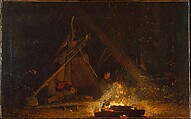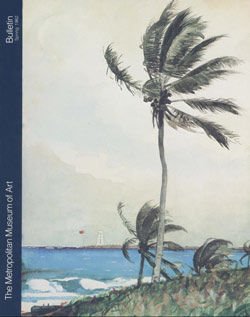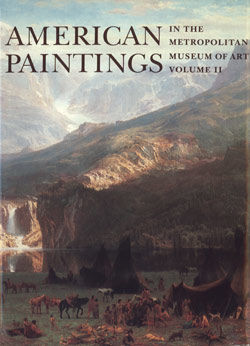Camp Fire
Winslow Homer American
Homer first visited the Adirondacks, in upstate New York, in September 1870 and returned to the mountains frequently during the succeeding decades to hunt, fish, and gather ideas for paintings. This canvas originated in an 1880 trip to Keene Valley. Two fishermen, identified by their tackle basket and long-handled net, are lost in their thoughts or dozing by the campfire. They have constructed their shelter under a partly uprooted cedar, which provides both a symbol of ravaged nature and a striking compositional element. An artist friend of Homer’s remarked that “a woodsman could tell what kind of logs were burning by the sparks that rose in long curved lines.”
Due to rights restrictions, this image cannot be enlarged, viewed at full screen, or downloaded.



